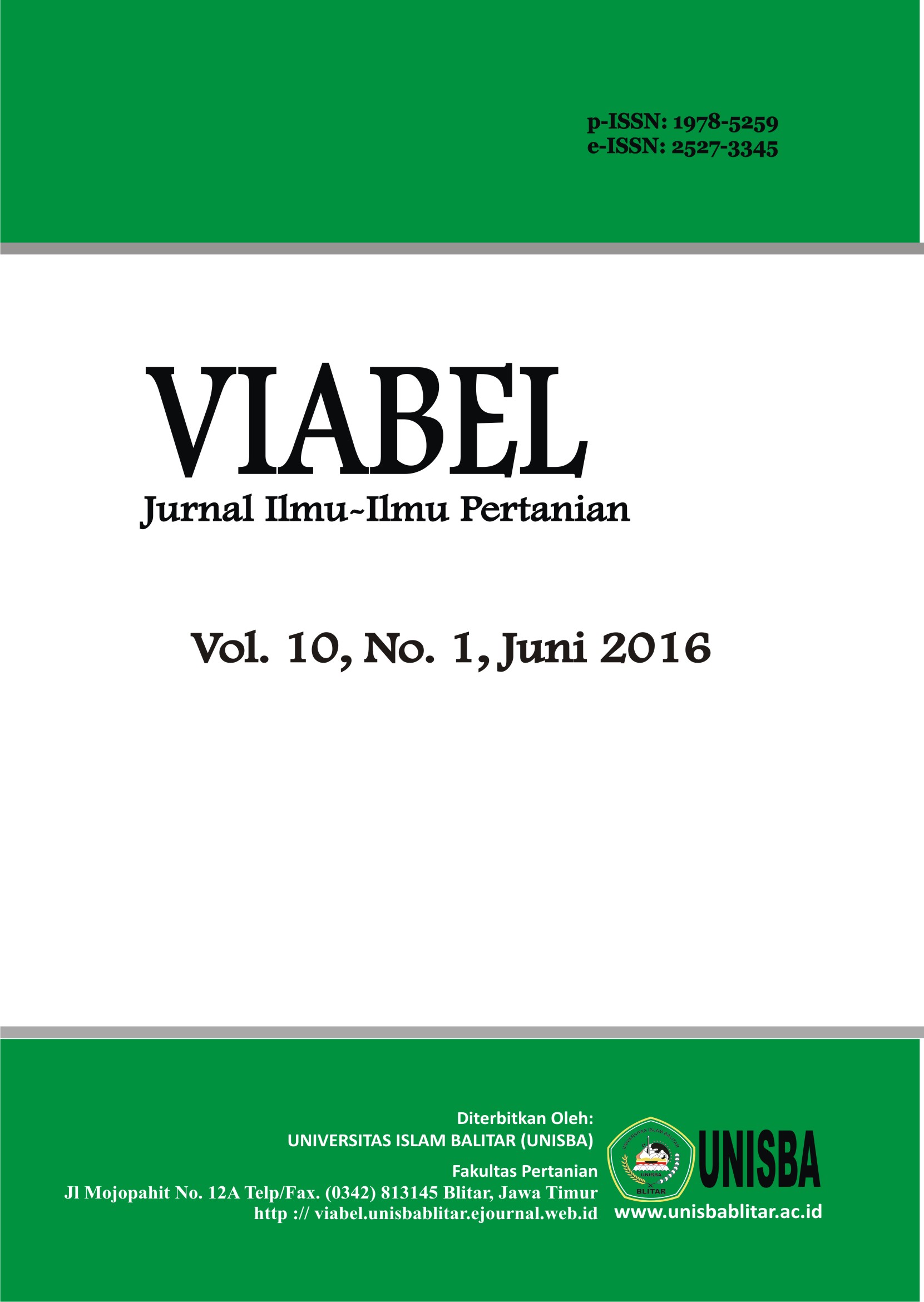UJI DAYA HASIL UBIKAYU (Manihot esculenta Crantz) VARIETAS UJ5 PADA BERBAGAI UMUR PANEN
Abstract views: 1095
,
PDF downloads: 1162
Keywords:
cassava yield, plant harvests ages
Abstract
This study aims to find out the results of cassava tuber crop UJ5 variety at different harvest ages. Research direction is that cassava varieties have been planted throughout Indonesia as the best producer of cassava varieties. High levels of starch and high HCN content makes this variety was selected by the factory - tapioca factory in Indonesia. Research design used randomized block design with 7 treatments of harvesting (UP) were repeated 3 times. UP6 (harvesting 6 MAP), UP7 (harvesting 7 MAP), UP8 (harvesting 8 MAP), UP9 (harvesting 9 MAP), UP10 (harvesting 10 MAP), UP11 (harvesting 11 MAP), UP12 ( harvesting 12 MAP). The research variables are the fresh weight of tuber, tuber starch content (%), the weight of biomass, harvest index, number of tubers per plant. The results showed that the best harvesting time is UP9 the results did not differ with UP10, UP11 and UP12
Downloads
Published
2016-06-01
How to Cite
Puspitorini, P., Pitaloka, D., & Kurniastuti, T. (2016). UJI DAYA HASIL UBIKAYU (Manihot esculenta Crantz) VARIETAS UJ5 PADA BERBAGAI UMUR PANEN. VIABEL: Jurnal Ilmiah Ilmu-Ilmu Pertanian, 10(1), 63-70. https://doi.org/10.35457/viabel.v10i1.114
Section
Articles
Authors who publish with this journal agree to the following terms:
- Copyright on any article is retained by the author(s).
- The author grants the journal, right of first publication with the work simultaneously licensed under a Creative Commons Attribution License that allows others to share the work with an acknowledgment of the work’s authorship and initial publication in this journal.
- Authors are able to enter into separate, additional contractual arrangements for the non-exclusive distribution of the journal’s published version of the work (e.g., post it to an institutional repository or publish it in a book), with an acknowledgment of its initial publication in this journal.
- Authors are permitted and encouraged to post their work online (e.g., in institutional repositories or on their website) prior to and during the submission process, as it can lead to productive exchanges, as well as earlier and greater citation of published work.
- The article and any associated published material is distributed under the Creative Commons Attribution-ShareAlike 4.0 International License











.png)
